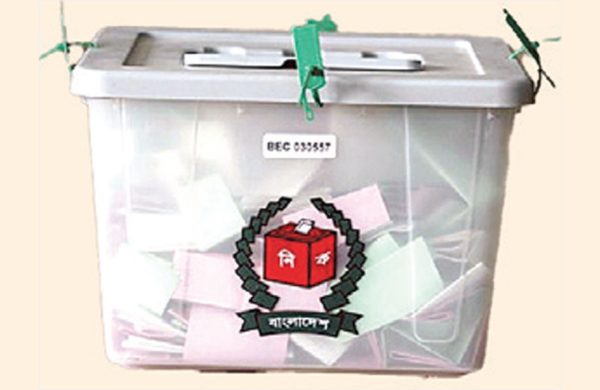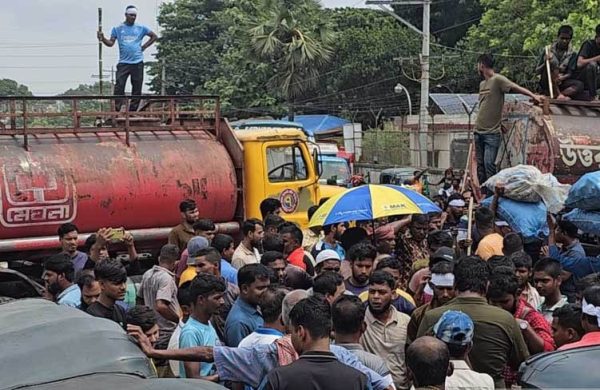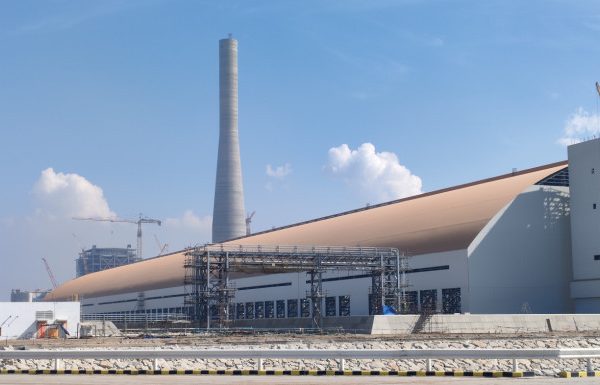Is Reciprocal Tariff Going to Create Legal Battle?
- Update Time : Tuesday, August 5, 2025

—Nironjan Roy—
The most important part of the modern supply chain is that the export order is placed well ahead, in some cases one year earlier, allowing manufacturers to assemble a special production line by establishing new machinery and mobilising raw materials. So, for higher tariffs or other trade restrictions, if relocation of the production base is required, the manufacturers face severe difficulty and sustain massive financial losses.
What is exactly happening in the turmoil created in the supply chain system? The disruption in the supply source is not only impacting manufacturers and exporters but also retailers and importers, as the former face difficulty in maintaining an uninterrupted supply of merchandise while the latter face difficulty in meeting the customers’ needs due to shortage of supply and high price. As reciprocal tariffs, although at a lower rate, are still in place, many suppliers across the world have been facing this situation, and similarly, many retailers in the USA have fallen on the most difficult time in keeping their business running.
Large corporate businesses have been trying to overcome this situation by employing multiple strategies based on their competitive advantages; however, small and medium enterprises are the worst victims of Trump’s reciprocal tariff. One such medium-range retailer in the USA is Rick Woldenberg, who manages retail stores to sell sophisticated toys, mostly educational toys. This company is required to place orders with the manufacturers for producing customised toys, which they import directly mostly from China, Vietnam, and India and sell through their family-owned retail stores in some selective states of the USA.
This company had placed orders to its suppliers, which mobilised resources to commence production, which has then been disrupted due to over a hundred per cent tariffs on imports from China.
Woldenberg had been struggling hard to maintain his business plan because of volatility created by the tariff decision and reached out to the authorities, trade bodies, and even think tanks to resolve the higher tariff issue but failed.
Finding no other alternative, the company owner resorted to legal action by suing President Trump and other administration officers in federal court. He primarily won the case, which subsequently went to the appeal court. As reported in the media, the judgement granted in favour of Wodenberg by the lower court has been stayed at the higher court, but the company has moved to the Supreme Court with a request to intervene in their favour.
Last April, the company owned by Woldenberg had sued Trump and his administration, challenging tariffs on constitutional and other grounds. The company’s strong argument was that even the president’s emergency powers do not allow him to impose so much higher tariffs without legislation.
Trump’s higher tariffs which have been announced have apparently been framed under the International Emergency Economic Power Act (IEEPA) of 1970. However, last May, the US Court of International Trade had ruled that the president had overstepped his authority and this act did not authorise him to impose steeper tariffs sparking a global trade war. Although a three-judge panel court has voided Trump’s tariffs, the US Court of Appeals for the Federal Circuit had hurriedly paused the ruling to take some time to consider the case.
The full court comprising eleven judges will hear the case soon. It is learnt that the case, which includes challenges raised by several states and small businesses, is said to be on the priority list, and as such, it would receive a verdict very soon. However, whichever party loses will move to the Supreme Court, making it a longstanding legal battle.
Regardless of the outcome of this court case over President Trump’s announced higher tariff, this legal battle has raised some valid questions. Firstly, whether IEEPA gives the President power to impose tariffs has become a debatable issue. Secondly, whether there is an extraordinary threat to the US that justifies invoking the law, especially when tariffs have no connection with the emergency Trump has claimed. Thirdly, whether any other previous president has used IEEPA the way President Trump has used it. In response to these concerning issues, the Trump administration has tried to justify that IEEPA and legislative history give the president power to regulate imports by imposing tariffs and other measures, so tariffs are valid and valuable bargaining tools to deal with real emergencies related to trade deficits and drug trafficking.
While the case over Trump’s reciprocal tariff is pending with the Supreme Court, the trade war has started. Although reciprocal tariffs have been reduced, the rate is high and an additional price burden for Americans. When most countries have breathed a sigh of relief for being able to avert a worldwide trade war by dint of lowering tariffs, the Americans have started getting pain as prices of commodities keep rising. Whatever judgement the Supreme Court pronounces will have a long-lasting impact on American trade. If Trump wins in this case, he will gain vast new powers to impose tariffs at will on foreign companies. On the other hand, if the company wins, the federal court may be flooded with lawsuits likely to be filed by other business enterprises, which may thwart Trump’s reciprocal tariff strategy.
————————————————————————
The writer is a certified anti-money laundering specialist and banker based in Toronto, Canada. Email: [email protected]



















